5 Rare Earth Producers in Baotou Pass Environmental Protection Inspections
- Details
- Category: Rare Earth News
- Published on Monday, 01 April 2013 11:39
- Hits: 2399
According to the website of the Environmental Protection Office, 80 rare earth producers in China meet environmental protection requirements, and passed inspections by the Environmental Protection Office. 5 of them are located in Baotou.
These five enterprises include Baotou Xinyuan Rare Earth Hi-Tech and New Material Company, Baotou Luodiya Rare Earth Company, Baotou Tianjiao Seimi Polishing Powder Company, Baotou Rewin Rare Earth Metal Materials Company and Baotou Santoku Battery Company.
After the inspections, environmental protection equipment standard and management ability of enterprises will improve.
Rare Earth Manufacturer & Supplier: Chinatungsten Online - http://www.chinatungsten.com
Tel.: 86 592 5129696; Fax: 86 592 5129797
Email: sales@chinatungsten.com
Tungsten News & Tungsten Prices, 3G Version: http://3g.chinatungsten.com
Tungsten News & Tungsten Prices, WML Version: http://m.chinatungsten.com
Baotou Steel Rare Earth Announces 2012 Annual Results
- Details
- Category: Rare Earth News
- Published on Monday, 01 April 2013 11:28
- Hits: 2472
China’s largest rare earths producer, Inner Mongolia Baotou Steel Rare-Earth (Group) Hi-Tech Co Ltd.(Baotou Steel Rare-Earth), saw a year-on-year decline of 56.58 percent in net profit last year. Moreover, Baotou Steel Rare-Earth plans to achieve 2013 with annual sales revenue totaled RMB 7.5 billion Yuan, down 18.85% compared to 2012, according to the company’s 2012 annual report released on Friday, March 29, 2013.
The company’s net profits amounted to RMB 1.51 billion Yuan, while operating revenue decreased 19.83 percent year on year to RMB 9.242 billion Yuan in 2012, earnings per share came in at 0.624 Yuan, in 2011, its net profits reached RMB 3.48 billion Yuan as well as per share reached 2.87 Yuan in 2011, according to its annual report filed with the Shanghai Stock Exchange.
“Rare earth market still remains in the doldrums in 2012, the rapidly falling prices of its rare earth-related products and a sharp drop in demand led to the profit and revenue declines. Moreover, the costs of raw materials have increased over the last year, which have increased production costs and push profit margins down”, the company explained.
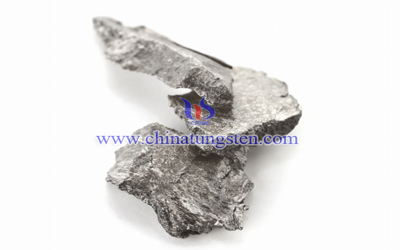
In fact, the company said that it earned a net profit of RMB 1.689 billion Yuan in the first nine months of last fiscal year, which means Baotou Steel Rare-Earth where as it recorded a net profit loss of RMB 1.79 billion Yuan during the fourth quarter due to the company had suspended rare earth production since October 23, 2012.
In addition, the annual report also noted that, under the central government’s plan, only one rare earth upstream enterprise was to be permitted in Baotou. Baotou Steel Rare-Earth has signed an integration agreement with 12 other rare earth producers in the region last year. The company plans to speed up its rare earth monopolization in the Inner Mongolia autonomous region. Moreover, will continue to strengthen communication with Sichuan, Shandong, Gansu (Province), promoting to set up the “China Northern Rare Earth Group”, while led to the creation of the industry’s first ever “mega-company” this year.
At present, almost all China’s enterprises are facing the problem of insufficient demand; the relatively sluggish domestic and overseas consumption market has slowed down the demand for rare earth oxides from the electronics, automobile and other industries. Moreover, the contracted demand from Japan and the US, the world’s second and third largest rare earth consumers respectively also will directly hit the domestic rare earth enterprises. Therefore, expects that the external environment will continue to affect the downstream demand for rare earths as well as the price of rare earth oxides will not make substantial improvement in the short term.”
Rare Earth Manufacturer & Supplier: Chinatungsten Online - http://www.chinatungsten.com
Tel.: 86 592 5129696; Fax: 86 592 5129797
Email: sales@chinatungsten.com
Tungsten News & Tungsten Prices, 3G Version: http://3g.chinatungsten.com
Tungsten News & Tungsten Prices, WML Version: http://m.chinatungsten.com
China’s REE Export Numbers Rise in February
- Details
- Category: Rare Earth News
- Published on Friday, 29 March 2013 10:51
- Hits: 2328
China’s rare earth export primary materials increased by 289.12 percent in February, to 1,106 metric tons (MT), compared with the same month in 2012; prices continue to drop month-on-month.
An industry analyst told Metal-Pages that China’s exports of rare earths increased sharply in February because the country exported only 284 MT in the same period last year and was assisted when prices continued to fall throughout the month, which in turn encouraged buyers to restock.
The average price for rare earths in February was $22,650 per MT, down 11.32 percent compared with $25,540 per MT in January.
“Exports increased due to low prices. Many consumers will restock before March when sales are stronger. In addition, many consumers restarted production after the Chinese New Year in February,” the analyst added.
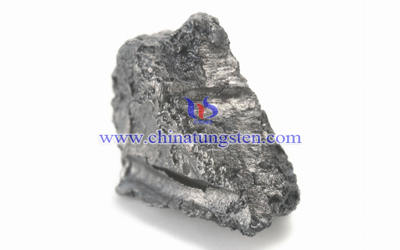
China’s rare earth prices have continued to weaken, with little business reported on the spot market and producers unwilling to sell product at lower prices due to high production costs. Prices for light rare earths and some heavies, such as dysprosium and gadolinium are unchanged, while prices for rare earths of fluorescent powder, such as europium, terbium and yttrium, have edged down slightly.
Reports from Metal-Pages note that market participants remain bearish on the future of rare earths and are expecting prices to decline in the short term, with supply outweighing limited demand from downstream industries.
Traders confirmed that 99-percent praseodymium-neodymium metal is being offered at $61,984 per MT, while the Chinese 99-percent praseodymium oxide market remains quiet due to weak demand. Current prices for dysprosium oxide 99 percent are unchanged at $322 per kilogram, while prices for ferrodysprosium are still at $338 per kilogram, according to Metal-Pages.
China’s terbium oxide market has been described as flat with sporadic trading in the spot market. Industry sources state prices are likely to fall slightly in the near term given lackluster demand from the downstream fluorescent powder industry. Current prices for terbium oxide 99 percent are at $603 per kilogram.
The 99-percent cerium oxide market is sluggish due to weak demand, with most suppliers putting 99-percent cerium oxide prices at $5,956 per MT.
Rare Earth Manufacturer & Supplier: Chinatungsten Online - http://www.chinatungsten.com
Tel.: 86 592 5129696; Fax: 86 592 5129797
Email: sales@chinatungsten.com
Tungsten News & Tungsten Prices, 3G Version: http://3g.chinatungsten.com
Tungsten News & Tungsten Prices, WML Version: http://m.chinatungsten.com
Peak Resources: A Rare Earth Junior with a Bright Future
- Details
- Category: Rare Earth News
- Published on Friday, 29 March 2013 10:22
- Hits: 2448
Peak Resources, an Australia-based firm focused on fast tracking the development of its 100-percent-owned Ngualla rare earth project in Tanzania, has attracted increased investor attention of late. Peak’s strategy for growth is to rapidly develop Ngualla into production via lower capital costs and to establish itself as a lower-cost quartile, long-term producer of clean, high-purity rare earth products.
The Ngualla project
Located in Southern Tanzania, 147 kilometers from the city of Mbeya on the edge of the East African Rift, the Ngualla project is centered on the Ngualla carbonatite. The name “Ngualla” comes from the Swahili word for “bald head,” which reflects the appearance of the site, most of which is bare land with no inhabitants or agriculture and very little wildlife.
The Ngualla deposit can be divided into two geographic and geological areas: the Southern rare earth zone, located in the center of the carbonatite around Ngualla Hill, and the South West alluvial zone. The Southern rare earth zone is a 1-kilometer by 1-kilometer area in the low magnetic central core of the Ngualla carbonatite, according to the company’s maiden JORC resource report. Rare earth mineralization occurs from the surface and is enriched in the weathered zone of the carbonatite, varying from a few meters to 140 meters vertical depth. The bulk of Ngualla’s mineral resource is contained within the Southern rare earth zone and most of the highest-grade component occurs near surface.

Distinct advantages
The project is a recent discovery and, according to the company, its fundamental geological aspects offer distinct advantages for development over other rare earth projects.
Some of these advantages include being one of the largest and highest-grade deposits in the world, as well as hosting an outcropping blanket of mineralization with the highest grades at surface. This favorable mineralogy makes the deposit amenable to a relatively simple, low-cost processing route, while its uranium (21 ppm) and thorium levels (35ppm) levels are the lowest of any major rare earth deposit in the world, the company’s website notes. Further, initial development will exploit only 10 percent of the total resource over a 25-year period, allowing for significant opportunities for future expansions.
It has not been lost on most investors that Ngualla is a “company maker” — the project has drawn comparisons to Lynas Corporation’s (ASX:LYC) Mount Weld project, a company press release notes.
The project received a significant boost last year when Peak announced the results of a scoping study that reveals Ngualla’s strong economics. At the time, it stated that Ngualla hosts a resource of 170 million metric tons (MT) at 2.24-percent rare earth oxide (REO), making it “the fifth largest rare earth deposit in the world outside of China.” It also has the highest grades of the world’s top seven deposits. The company noted a base case pre-tax net present value figure of $1.571 billion over the 25-year life of the mine, with an average cost of $11.05 per kilogram over that mine life. Average annual revenues will come to $361 million at 10,000 MT equivalent REO production.
Critical rare earth oxides
As the technological applications of rare earths have changed, so too have supply and demand fundamentals. That was highlighted in the US Department of Energy’s 2011 Critical Materials Strategy report, which outlines the critical rare earth oxides (CREOs) that will likely be in short supply moving forward.
The Ngualla project contains a substantial proportion of five CREOS, which together account for 56 percent of the deposit’s in-ground value. Neodymium is the most prominent, at 34 percent of this value, with other notable CREOs being europium, terbium, dysprosium and yttrium, according to Peak’s website.
Also impressive is the fact that the company is currently engaging cornerstone and strategic partners to assist in taking Ngualla through to production in 2016. Considering the project’s 53-percent internal rate of return, it is an attractive investment for strategic investors willing to bet on rare earth oxides in the long run.
In the February issue of Resource Stocks, the company confirmed its plans to engage a strategic partner in the second half of this year, having been working with various strategic investors out of China, South Korea, Japan and Germany, from which interest is “fairly high and competitive.”
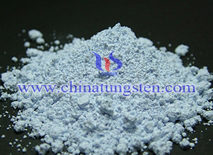
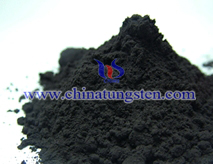
Always looking to improve
While last year’s resource study effectively put Peak on the map, it is the company’s continued success in improving its economics that is proving enticing.
Earlier this month, Peak announced further improvements to the beneficiation process for its Ngualla project in a move that it says has enhanced the project’s overall economics. It noted that the ability to concentrate mineralization at an early stage prior to acid-leach recovery will have a significant positive impact on the project’s costs moving forward.
Outlining some highlights, it confirmed that the optimization of its beneficiation process effectively reduces the mass of feed to be treated by the acid-leach recovery process by 43 percent compared to the initial scoping study’s assumption. The optimized process in turn increases the grade of the feed by over 300 percent, from 5.3-percent REO to 16.9-percent REO for the test’s composite sample.
The latest test work also shows that conventional magnetic separation and flotation techniques reduce the mass of the feed mineralization by 78 percent, and that reducing the amount of material processed at the acid leach recovery stage has a significant impact on overall operating costs. These cost reductions are set to be quantified in a revision of the scoping study and economic assessment that will be completed in the second quarter of 2013. The revised study will also use a new optimized mine schedule based on the new mineral resource estimate and is on schedule for completion by the end of this month.
Richard Beazley, managing director, commented in the press release, “Ngualla continues to improve with each milestone. We are already in the lower quartile in terms of operating costs, and also have one of the lowest capital costs of any rare earth project.”
Last year was a massive year for this junior as it notched up three major milestones; however, 2013 could very well provide the watershed moment investors are hoping for. With the firm keenly set on finalizing products, attracting investors and strategic partners, the prefeasibility study for Ngualla is likely to finally get this hard-working junior the recognition it deserves.
Rare Earth Manufacturer & Supplier: Chinatungsten Online - http://www.chinatungsten.com
Tel.: 86 592 5129696; Fax: 86 592 5129797
Email: sales@chinatungsten.com
Tungsten News & Tungsten Prices, 3G Version: http://3g.chinatungsten.com
Tungsten News & Tungsten Prices, WML Version: http://m.chinatungsten.com
The Rare Earth Metal Meltdown in Molycorp
- Details
- Category: Rare Earth News
- Published on Friday, 29 March 2013 09:47
- Hits: 2285
Since April 2010, the rare earth metals stock of Molycorp has cratered more than 92%, diving from just over $74 to yesterday’s close of $5.45. The decline in MCP shares has been particularly pernicious over the past 52 weeks, with the stock losing 83% of its value. To make matters of late even worse, so far in 2013 the shares have plummeted some 48.5%.
The precipitous decline in Molycorp is a far cry from its brilliant beginnings. The company first began trading in July 2010, and through April 2011 it was a bullish sensation, vaulting some 460% in about nine months.
Think about the fervor and the extreme optimism associated with the rise of the “rare earths” back in 2010. The investment thesis here was that tremendous demand for items such as cell phones, small electronics, biotech devices and other gadgets that needed these metals to function would cause big global demand for rare earths. By extension, this would create huge revenues and earnings for companies such as Molycorp, as well as other rare earth stocks such as Rare Element Resources, Avalon Rare Metals and even Freeport-McMoRan.
Among the big drivers of demand for rare earths were China and its burgeoning consumer class hungry for devices that use these metals. Then there was the Chinese government, which actually kept supplies low by restricting rare earth exports.
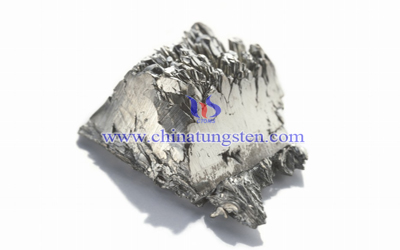
Well, things didn’t quite pan out that way for Molycorp and the rest of the rare earths, and since April 2011 the only thing that’s been rare in these stocks is investors bidding them higher. In the case of MCP, the company has really fallen on hard times, putting in a string of new all-time lows, and sinking well below its IPO debut trading day closing price of $12.34.
Fundamentally speaking, Molycorp has suffered from a huge decline in quarterly earnings. Most recently, the company posted Q4 earnings after a worrisome delay of about two weeks — a delay it said it needed to account for a goodwill impairment charge. That charge came to $258.3 million in the fourth quarter related to the $1.3 billion takeover of rare earth processor Neo Material Technologies.
Excluding the impairment charge, Molycorp reported a loss of $52.7 million, or 45 cents a share, which compares miserably with the adjusted profit of $35.9 million, or 41 cents a share, in the same quarter a year ago.
The latest quarterly loss is symptomatic of current conditions in the rare earth market. The main culprit here is a price collapse in the roughly 17 metals and oxides considered members of the rare earth group. This price collapse began, not coincidentally, in April 2011, right when the rare earth stocks began their big decline.
Up until April, China, the top producer of rare earths, had been restricting exports. That kept prices high, and that caused the share price of domestic producers like Molycorp to soar. Then China decided to ease export controls, and there’s been a virtual meltdown in the sector ever since.
So, is there anything that can cause Molycorp shares to rise?
The way things are now, the answer is likely no. About the only thing that can help this stock go up are bottom feeders looking to take a chance that the fundamentals in the space will turn positive … eventually.
But unless China reinstitutes its export controls on rare earths, MCP shares are likely to live around current levels for a very long time.
Rare Earth Manufacturer & Supplier: Chinatungsten Online - http://www.chinatungsten.com
Tel.: 86 592 5129696; Fax: 86 592 5129797
Email: sales@chinatungsten.com
Tungsten News & Tungsten Prices, 3G Version: http://3g.chinatungsten.com
Tungsten News & Tungsten Prices, WML Version: http://m.chinatungsten.com
Two Big Rare Earth Players Outside of China Change the Landscape
- Details
- Category: Rare Earth News
- Published on Thursday, 28 March 2013 10:19
- Hits: 2436
The diversification of world rare earth supplies is closer to reality this week as Lynas Corp, which formally started production of rare earths at its LAMP facility has been fully cleared of any legal encumbrances, lifting any lingering concerns for its long term plans. The Federal Court in Malaysia has upheld a decision of a district court, which ejected a complaint against Lynas’s LAMP rare earth processing plant in Kuantan. This is a major legal blow for the “Save Malaysia, Stop Lynas” group, which was intent on blocking Lynas from operating in Malaysia, challenging the Malaysian government’s own license granting Lynas permission to process rare earths. In February, Lynas formally exported its first batch of processed rare earths from LAMP. Lynas’s legal battles have come to a close (at least for the time being) just days after Molycorp announced its yearly and fourth quarter results.
The results showed a USD$ 362 million net loss but investors rewarded the new management, which acknowledged some of the previous errors–excessive exuberance for one-while noting that Molycorp’s situation should improve in the latter half of the year as production at Mountain Pass increases to achieve full commercial production. Molycorp also expects that the global demand and supply will be balanced in 2013, so both suppliers and customers will benefit from the prices of many key rare earth applications. Rare earth demand should also increase as they are increasing applications requiring permanent magnets, rechargeable batteries and catalysts for reducing pollution, electronics and portable equipment. While the current indicator of resource success is the percentage of heavy rare earths (HREE) in a given deposit, cerium, lanthanum and neodymium are the most used rare metals accounting for over three quarters of consumption. However, demand for other members of the rare earth ‘family’ such as praseodymium and dysprosium is expected o increase significantly with the development and improvement in permanent magnets and rechargeable batteries.
China will continue to dominate the market; however, now that Lynas and Molycorp have overcome some lingering shadows over their short term future, the gradual shift in production westward (if only in ‘ideological’ terms) has started and China itself can be expected to help boost that demand if Beijing continues to reform the rare earth industry, controlling production and enforcing unprecedented environmental and safety standards. Scandium is another metal that has been gathering attention as small quantities used in special alloys can drastically affect their performance. Scandium also increases stiffness and stress resistance when compared to alloys in the same class and it improves ‘quality’, durability, inhibiting the re-crystallization of aluminum alloys showing improved resistance to hot cracking during welding. Metallica Minerals is developing a high grade scandium and cobalt-nickel project (known as SCONI). Last week, Sumitomo Metal Mining Company announced plans to build a scandium recovery plant at its Coral Bay Nickel subsidiary in the Philippines. Sumitomo’s plans came after the discovery of small quantities of scandium in the Coral Bay ore resource that is used in nickel-cobalt mixed sulfide production.
Rare Element Resources, meanwhile, released last year’s assay results for the remaining core holes in its Bear Lodge Drilling program in northern Wyoming. The results were encouraging, and showed that high grades of total rare earth oxide (TREO) are contained in the deposits along with large amounts of combined critical rare earth oxides. The company’s Whitetail Ridge project uncovered large quantities of heavy rare earth elements (yttrium, dysprosium, europium, and terbium) in 2011, and these latest assay results confirm those discoveries. Peak Resources announced progress in the beneficiation process for its Ngualla project in Tanzania, saying that costs can now be reduced significantly using early stage concentrate mineralization (prior to leach recovery). Peak will quantify the reductions in cost as it revises its scoping studies, and a full economic assessment is expected in June.
The continuing weak or lackluster share price performance of rare earth stocks – the ProEdgeWire rare earth and critical mineral sponsors showed a weekly loss of -0.98% has resulted from continued market uncertainties even if some good news is slowly emerging. The US Congress reintroduced the Resource Assessment of Rare Earths (RARE) Act, which aims to reduce China’s monopoly on the rare earths market and secure additional materials supply through mineral assessments by the US Geological Survey (USGS). With China controlling the vast majority of global REE production (and expressing an interest in the restriction of REE exports), the bill is aimed at constructing a comprehensive approach to remain competitive with China and Germany when dealing with future supply and demand limitations in REEs.
Last week’s economic data showed that manufacturing activity in the US rebounded for the month of February, with Factory Production numbers rising 0.8% (after a 0.3% increase in January) thanks to higher vehicle production data rising by 3.6% (after the 4.9% drop seen in January). The data is encouraging for demand prospects in the metals space after the strong employment figures posted earlier this month but some of this optimism is being offset by debt issues in Cyprus, which are seen adding an element of macroeconomic uncertainty near term. Elsewhere, the Bank of Japan announced additional fiscal stimulus to revive the country’s struggling economy while US President Barack Obama expressed support for diverting $2 billion in oil and gas royalties into research projects in clean energy, creating a more supportive scenario for green metals.
Light rare earths (particularly neodymium, lanthanum, cerium and praseodymium) saw some of the biggest losses as weakness in demand and increased output continues to add to the broadly softer environment. Heavy rare earths (terbium, yttrium, and europium) were stable, with no reported exchanges. Citing broader increases production costs, suppliers say they unable to accept lower prices for rare earths, and with weakening demand in downstream industries (such as magnetic materials and fluorescent powders), near term forecasts suggest that prices are unlikely to see significant upward changes in coming weeks.
Rare Earth Manufacturer & Supplier: Chinatungsten Online - http://www.chinatungsten.com
Tel.: 86 592 5129696; Fax: 86 592 5129797
Email: sales@chinatungsten.com
Tungsten News & Tungsten Prices, 3G Version: http://3g.chinatungsten.com
Tungsten News & Tungsten Prices, WML Version: http://m.chinatungsten.com
Texas Rare Earth Resources Announces Major In-House Metallurgical Findings
- Details
- Category: Rare Earth News
- Published on Thursday, 28 March 2013 09:28
- Hits: 2434
Texas Rare Earth Resources Corp., a heavy rare earths exploration company, is pleased to announce that in-house research on the mineralogy, geochemistry, and kinetics of direct acid leaching indicates that this simple process is effective in removing target heavy rare earth elements from coarse grains of Round Top rock. These continuing studies are defining the conditions under which approximately 150 grams per liter (15%) strength sulfuric acid successfully penetrates the grains and dissolves the valuable rare earth-containing minerals that are disseminated throughout the rhyolite host rock. Estimated recoveries into solution of the target heavy rare earths consistently exceed 80%. If the further technical results and economics of the leach process prove favorable, the combination of open pit mining and heap leaching could significantly decrease capital and operating costs for a heavy rare earth facility. This approach is in the process of being confirmed by independent third-party consulting laboratories and will be released upon completion.
Dan Gorski, CEO, commented “This research indicates that the porosity and permeability of the Round Top rhyolite coupled with the favorable solubility characteristics of the REE minerals holds potential for heap leaching at Round Top. We will continue to investigate this alternative REE extraction approach by trying to optimize the particle size, time, acid strength and solution management to develop a heap leach economic model for this deposit.”
Texas Rare Earth Resources Corp.’s primary focus is exploring and, if warranted, developing its Round Top rare earth minerals project located in Hudspeth County, Texas, 85 miles east of El Paso. The Company’s common stock trades on the OTCQX U.S. tier under the symbol “TRER.” For more information on Texas Rare Earth Resources Corp., visit its website at www.trer.com.
Forward-Looking Statements This press release contains forward-looking statements within the meaning of the U.S. Securities Act of 1933, as amended, and U.S. Securities Exchange Act of 1934, as amended, including, but not limited to, statements regarding possible simple sulfuric acid leaching processing at our Round Top project, the combination of open pit mining and heap leaching significantly decreasing capital and operating costs, confirmation of heap leaching process by third parties, and release of third party results. When used in this press release, the words “potential,” “indicate,” “expect,” “intend,” “hopes,” “believe,” “may,” “will,” “if, “anticipate,” and similar expressions are intended to identify forward-looking statements. These statements involve known and unknown risks, uncertainties and other factors which may cause the actual results, performance or achievements of the Company to be materially different from any future results, performance or achievements expressed or implied by such statements. Such factors include, among others, risks related to changes in future operating costs and working capital balance, risks related to mineralogy processes, risks related to mineral estimates, risks related to the inherently dangerous activity of mining, as well as those factors discussed under the heading “Risk Factors” in the Company’s latest annual report on Form 10-K, as filed on November 15, 2012, and other documents filed with the U.S. Securities and Exchange Commission. Except as required by law, the Company assumes no obligation to publicly update any forward-looking statements.
Rare Earth Manufacturer & Supplier: Chinatungsten Online - http://www.chinatungsten.com
Tel.: 86 592 5129696; Fax: 86 592 5129797
Email: sales@chinatungsten.com
Tungsten News & Tungsten Prices, 3G Version: http://3g.chinatungsten.com
Tungsten News & Tungsten Prices, WML Version: http://m.chinatungsten.com
Rare Earth Prices Traded Weaker
- Details
- Category: Rare Earth News
- Published on Tuesday, 26 March 2013 17:20
- Hits: 1478
Two days the praseodymium neodymium oxide transaction prices continued downward, turnover is limited, an adequate supply of the metal, deserted Inquirer.
It is understood that, Ganzhou oxide, praseodymium, neodymium supplier continuous price cut since the last week, excluding tax 258,000 yuan / ton price of the transaction, two days offer even dropped to 256,000 yuan / ton, and the market price including tax temporarily maintained at 300,000 yuan / ton.
Shanghai rare earth traders said, two weeks before the metal bid was slightly lower downstream rare Inquirer. Addition praseodymium, neodymium, dysprosium iron turnover in the doldrums, the metal praseodymium, neodymium prices slightly lower than the pre-market tax 430,000 yuan / ton, while the the metal neodymium markets tax 41-42 yuan / ton, the small amount of turnover in the market. Low - priced products for the emerging markets, the industry believes that the country should accelerate the pace of integration, industry policy is put in place, use of administrative measures to curb low - price products hit the market.
Rare Earth Supplier: Chinatungsten Online - http://www.chinatungsten.com
Tel.: 86 592 5129696; Fax: 86 592 5129797
Email: sales@chinatungsten.com
Tungsten News & Tungsten Prices, 3G Version: http://3g.chinatungsten.com
Tungsten News & Tungsten Prices, WML Version: http://m.chinatungsten.com
Rare Earth Smelting Process Achieved Two Technological Breakthroughs
- Details
- Category: Rare Earth News
- Published on Tuesday, 26 March 2013 17:02
- Hits: 2431
Recently shared by Baotou Steel Rare Earth subsidiary Inner Mongolia Baotou Steel and hair Rare Earth Co., Ltd. Inner Mongolia University of Science and Technology "mixed light rare earth resources clean efficient extraction of new technologies and applications for two major technological breakthroughs, the project" Ten 25 "national Science and Technology Pillar Program.
The first technique is to start from the 50% of rare earth concentrates, the fractionation extraction theory is introduced to the re-selection process rare earth concentrate, high-grade rare earth concentrate, the technology is not only efficient extraction of rare earth, comprehensive recovery of associated elements, but also has does not produce harmful emissions, waste residue less, low production costs significant advantages. The second technique is based on 65% of high-grade rare earth concentrates as raw materials flotation separation to get single Bastnaesite concentrate and monazite concentrate. The technology further simplifies the smelting process, reduce the cost of smelting, the new technology for the Bayan Obo mixed rare earth concentrate smelting.
At present, the subject has applied for 14 patents authorized 4.
Rare Earth Supplier: Chinatungsten Online - http://www.chinatungsten.com
Tel.: 86 592 5129696; Fax: 86 592 5129797
Email: sales@chinatungsten.com
Tungsten News & Tungsten Prices, 3G Version: http://3g.chinatungsten.com
Tungsten News & Tungsten Prices, WML Version: http://m.chinatungsten.com
U.S. Military Compromised by Chinese Rare Earth Dependence
- Details
- Category: Rare Earth News
- Published on Tuesday, 26 March 2013 12:01
- Hits: 2762
The latest biannual “Strategic and Critical Materials 2013 Report on Stockpile Requirements” (‘The Report’) published by the U.S. Department of Defense (DoD) urges Washington to accumulate $120.43 million worth of heavy rare earths as part of a $319.74 million program to stockpile 23 critical materials. Each of these materials is ordered along a list arranged in accordance to how much money – and what quantity – should be spent to secure it. The report reflects the need to revise the U.S. government mineral sourcing requirements in view of their growing importance in security matters, including energy security and the shift to the much touted ‘green economy’. The considerations expressed by the DoD reflect the 2013 National Defense Authorization Act through which Congress has revised the way the Defense Department’s acquires and applies strategic materials.
The idea of stockpiling strategic materials is not new; it was started just shortly before World War II in order for the U.S. military and civilian industrial complexes to gain secure access to the materials needed to produce defense platforms. The problem, today, is the proliferation of the ‘outsourcing’ mantra in all areas of the economy, which means that many of the materials the United States needs the most are being sourced beyond the United States and even beyond the its primary allies. Without beating around the proverbial bush, this means that the United States is taking too many risks by relying so much on China as the source of many critical materials. China has shown itself to be more than willing and capable of using quotas to control exports of strategic materials in order to advance its own political and geo-strategic interests.

China is not the only country to have used ‘checks and balances’ on their critical materials exports. Increasingly, companies are paying more attention to non-tangible business risks, sometimes include under the umbrella of corporate sustainability, which preclude their involvement in supplying technologies that have military applications. Such companies as Caterpillar, which makes construction machinery, have been targeted because of the military use of their bulldozers. A camera manufacturer in Japan – or China – may refuse supplying cameras for missiles and other critical parts needed to make munitions or rockets or hardware. This is especially the case as so many technologies today can address dual civilian/military needs with mere software or configuration changes.
At the end of 2012, the DoD took steps to start addressing some of these risks, signing a series of special contracts with U.S. based potential producers of REE magnets (neodymium-iron-boron or ‘neo’) magnets and equivalents from the raw supplies to the finished product. Neo magnets are used to make missile guidance systems, fU.S.es for explosives and satellite communication devices, all of which, evidently, are important to U.S. national security. Thomas & Skinner Inc., Ucore Rare Metals Inc. (‘Ucore’, TSX.V: UCU) and Great Western Minerals Group Ltd. (‘GWMG’, TSX.V: GWG) were among the beneficiaries. The DoD, therefore, has been trying to reduce its vulnerability to the whims of national and corporate material and technology producers which may or may not agree to supply these. In terms of critical materials, and rare earths in particular, the industry has become extremely lopsided in China’s favor and the time and investment needed to get a dependable domestic REE supply is considerable.
The DOD, therefore, has set out to identify alternative REE sources, especially those driving a resurging U.S. domestic REE industry. Nevertheless, while the intentions of the Stockpiling program are valid, the solution to the problem may be flawed. According to the Strategic Materials Advisory Council (SMAC) if the DOD is serious about stockpiling HREE’s it will be limited to China as the source for the time being. More importantly, the DoD spears to be contradicting itself by failing to promote the need for a greater role of U.S. mining and industry in securing these critical materials while other departments in government are doing more to hurt than to promote the necessary expansion of the U.S. mining industry that would ease dependency on outsiders. The ‘stockpiling’ plan then seems disingenuous, because left to be deployed under the current conditions, it fails to address the main risk: stockpiling, yes, perhaps; but from whom? The answer can only be China.
Rare Earth Manufacturer & Supplier: Chinatungsten Online - http://www.chinatungsten.com
Tel.: 86 592 5129696; Fax: 86 592 5129797
Email: sales@chinatungsten.com
Tungsten News & Tungsten Prices, 3G Version: http://3g.chinatungsten.com
Tungsten News & Tungsten Prices, WML Version: http://m.chinatungsten.com


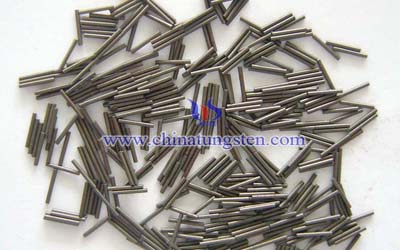


 sales@chinatungsten.com
sales@chinatungsten.com